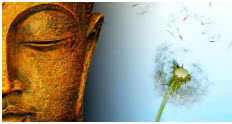Na Amida Butsu
On the island of Maui, all Buddhist temples observe Obon services, which begin in June and end on the last Sunday in August. When I arrived in Maui in 2004, Obon was primarily held at either the east temple or the west temple first.
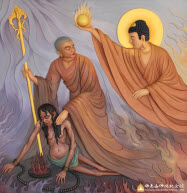
Then, we alternated Obon between the temples on the east and west on weekends. However, over the years, we encountered difficulties in having two-week Obon services on the same side of the temples due to a lack of manpower. So, during a council meeting, we agreed to make some adjustments to set their Obon dates and services.
As you may know, all Bon Dancers, young and old alike, wear colorful and beautiful Yukata and Happi coats and participate in the Bon Dance with true joy and happiness. Before the Dance, we usually hold Hatsu-Obon or Obon service as the first observance of Obon for the deceased families. During the aspiration, the ministers typically announce the names of the Hatsu-bon members and pay respect to those dedicated individuals. Of course, this may vary depending on the ministers, but usually, ministers share with the family the meaning of Obon and stories of Obon, emphasizing salvation through the Amida Buddha’s infinite wisdom and compassion.
The origin of Obon is the word “Ullabanna,” which comes from Sanskrit and means “hanging upside down.” Here is the story behind this Ullabanna episode:
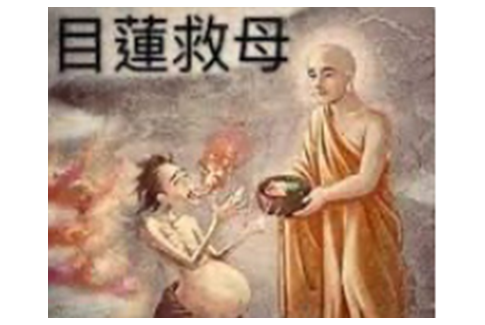
In his mind, his mother was like a role model for all sentient beings, leading an extraordinary life as a heavenly being, enjoying its precious moments. With this belief, he used his superpowers to search for his mother. He searched the realms of heavenly beings, but she was not there. He thought that his mother, being so kind, must be helping people who were less fortunate in the human world. So, he searched within the human realm, but no matter where he looked, he could not find his mother. He even explored the World of “Asuras,” where constant fighting and killing took place, but she was not there either. Then, he looked further down to the World of animals, yet she was nowhere to be found. He continued searching deeper and lower until, finally, he discovered his mother. She was in what they called the “Hell of Hungry World.”
Using his extraordinary powers, he tried to save his mother from the hungry hell, but all his efforts were in vain. His mother appeared emaciated, with wide, desperate eyes always searching for food. Even when she found food, she never shared it with others. Deeply moved by his mother’s pitiful state, Moggallana offered her food in a bowl. His mother chased away the people around her and grabbed the food, eagerly preparing to eat it. But as she was about to take a bite, the food turned into fire, engulfing her face. Moggallana quickly used his superpowers to summon rain and extinguish the fire. Rain poured down, but just as it was about to reach his mother, it transformed into sharp needles, causing her face and body to bleed.
Feeling hopeless, Moggallana thought that there was no way he could save or rescue his mother from the Hungry World. Filled with selfless hope, he went to seek help from Shakyamuni Buddha. Buddha instructed him, saying, “On July 15, invite the monks who have completed their summer practices and perform the services with them. By doing so, you will save your mother.” Moggallana followed Buddha’s guidance, invited the monks to his residence, and sincerely conducted the special services. As a result of his filial piety and many virtues, his mother was reborn into the Pure Land of Buddha. Since then, July 15 has become the day when families observing Hatsu-bon invite ministers to their homes and hold special services for their loved ones. This tradition has been preserved in our society for centuries
Simultaneously, it reminds us that the cherished memories and sincere hearts of our loved ones persist within us. Please remember that the purpose of the Obon service is not solely for the benefit of our deceased members but also for everyone to encounter the profound guidance of Buddha’s teachings.
Flowers may wither, but they produce seeds that give birth to new life. Similarly, our deceased loved ones, with their tremendous efforts, have bestowed upon us this precious life. Someday, we too will depart, but our children and grandchildren will recognize the profound guidance inherited from each of us and pass it on to the next generation.
Once again, I firmly believe that the Hongwanji way of observing Obon presents us with a remarkable opportunity to experience the wonderful guidance of Amida Buddha’s infinite wisdom and compassion through the memories of our loved ones. It brings joy and happiness to our lives. Wailuku Hongwanji Mission will be conducting our Hatsu-bon services on July 28 & 29, starting at 6:30 p.m. I invite you to join these special services and welcome our Obon season with a sincere heart filled with gratitude.
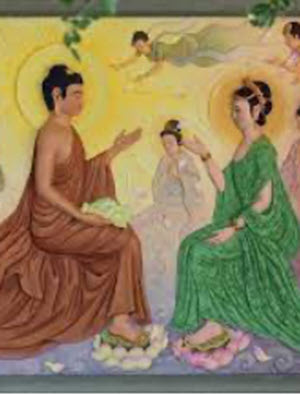
While leaving for lunch, I received a phone call from Mrs. Jane Doe’s daughter, informing me that her mother had passed away that morning at home and had been transferred to the mortuary. She asked if I could officiate her mother’s funeral service at Wailuku Hongwanji Mission.
The following day, I met Mrs. Jane Doe’s daughter at my office to discuss the funeral services. She shared her mother’s memories and the tremendous effort her mother had put into living in the United States of America after moving from Japan. After her daughter’s birth, she faced a crisis that led to her divorce, and she raised her daughter as a single mother. Consequently, the mother and daughter had a very close relationship, and her mother taught her many valuable things, such as culture and Japanese cuisine.
According to her, her mother’s family belonged to a different Buddhist sect in Kyoto, Japan, and there were no associated temples nearby. As her grandson attended our Japanese School, she decided to reach out to me. During our funeral counseling, she had previously visited a Tendai sect temple associated with her mother’s family. There, she discovered that Tendai’s rituals and services differed slightly from those of the Tendai sect. However, after my explanation, she agreed to follow the Hongwanji format for the funeral services. Although it was a semi-private funeral service, many people attended Mrs. Jane Doe’s funeral. Once a few people offered incense three times and engaged in a brief meditation, everyone followed suit. Many attendees wanted to share their memories, causing the service to run a little longer than usual. After attending our services during the Hatsu-bon season, this family went to Japan for Mrs. Jane Doe’s inurnment and Hatsu-bon services at her family’s associated temple. Upon their return, they continued attending our temple services until the daughter relocated to California. Through this experience, they had learned about the great wisdom and compassion of Amida Buddha, which helped them overcome the separation from the mother.
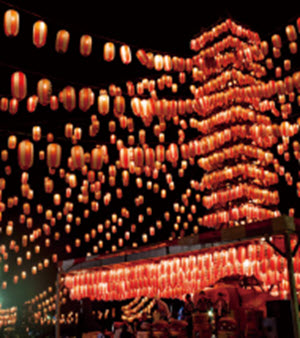
According to her, her mother’s family belonged to a different Buddhist sect in Kyoto, Japan, and there were no associated temples nearby. As her grandson attended our Japanese School, she decided to reach out to me. During our funeral counseling, she had previously visited a Tendai sect temple associated with her mother’s family. There, she discovered that Tendai’s rituals and services differed slightly from those of the Tendai sect. However, after my explanation, she agreed to follow the Hongwanji format for the funeral services. Although it was a semi-private funeral service, many people attended Mrs. Jane Doe’s funeral. Once a few people offered incense three times and engaged in a brief meditation, everyone followed suit. Many attendees wanted to share their memories, causing the service to run a little longer than usual. After attending our services during the Hatsu-bon season, this family went to Japan for Mrs. Jane Doe’s inurnment and Hatsu-bon services at her family’s associated temple. Upon their return, they continued attending our temple services until the daughter relocated to California. Through this experience, they had learned about the great wisdom and compassion of Amida Buddha, which helped them overcome the separation from the mother.
